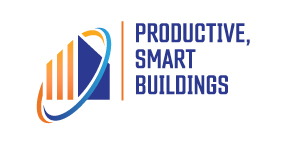
Facilities professionals have focused consistently on reducing their operational and energy costs. While they have been successful at achieving their goals, it sometimes has been done with minimal focus on occupant comfort, health, or safety.
Jones Lang Lasalle’s 3-30-300 rule postulates that organizations spend on average $3 for Utilities, $30 for Rent/Built Space, and $300 on Payroll per square foot per year. As facilities managers, the perceived circle of control has been on the “3” and the “30,” with little attention paid to the “300.” These factors have been shown to have a significant impact on the productivity of an organization’s greatest asset, the people.

This perception has drastically changed during the COVID pandemic when occupants started asking the facilities managers, “Is my building safe to occupy?” A 2021 survey of prospective college students’ parents identified Indoor Air Quality as one of the top concerns for university selection. Directly to these points, this attention to occupant health has brought the facilities manager to the head of the table to answer this question.
Unfortunately, there is not an “easy button” to quantify and communicate the health or safety of facilities and its relationship to the occupant experience, hence an occupant’s productivity. There are several organizations that now have a product or certifications to evaluate buildings, with occupant health and sustainability at center stage. But most, if not all, require a significant monetary and/or time investment. These are all great organizations with excellent initiatives, but many facilities managers cannot make these investments. However, they are still left with the task of conveying the health, safety, and associated occupant experience of their building(s). It is also imperative they also continuously monitor that condition through the use of smart building technologies.
It is for this reason that the APPA Board of Directors has made Productive, Smart Buildings a high-priority initiative. At present, a small group of industry experts developed a self-assessment, decision-making framework for productive/healthy buildings with investment in smart technologies across a campus or real estate portfolio to enhance the occupant’s experience and productivity.
The framework will:
- Provide an easy-to-understand productive/healthy rating system for an individual building or group of buildings.
- Prioritize the needs of facilities with a focus on productive/healthy buildings to drive human performance.
- Identify areas of improvement to monitor the current health and productivity of buildings using smart technologies and analytics periodically or continuously.
- Serve as a communication tool with building owners, campus leadership, or the community the healthy and productive conditions in the building(s).
- Derive actionable data for facilities managers to improve the productive/healthy, smart rating of their building(s) for improved stewardship.
- There are 10 foundational elements resident in the framework and a corresponding scorecard that been beta-tested by several leading institutions.
For additional information, please contact [email protected]
 Create an Account
Create an Account
 Login/myAPPA
Login/myAPPA
 Bookstore
Bookstore
 Search
Search  Translate
Translate